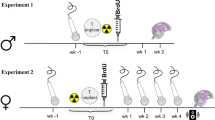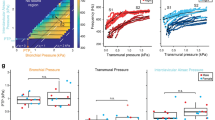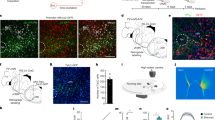Abstract
A MAJOR question in the physiology of activity rhythms is the nature of the coupling between the pacemaker and the motor system. There is good evidence for humoral coupling in several species. In the sparrow, pineal organs from donor birds maintained in a light–dark cycle different from that of the host were transplanted into the anterior chamber of the eye of recipient birds made arrhythmic by pinealectomy. In this case the activity rhythm of the host was restored and its phase was determined by a diffusible humoral factor from the implanted pineal1. In the mollusc Aplysia humoral coupling between the circadian pacemaker and the output cells is thought to control locomotor activity, although electrical coupling has not been ruled out2. In insects, however, experiments involving cockroaches and silkmoths indicate that an intact electrical connection between the brain and thoracic ganglia is required for rhythmic activity. The pacemaker controlling the locomotor activity rhythm in the cockroach appears to reside in the optic lobes, and disruption of the electrical pathway between the optic lobes and thoracic ganglia results in arrhythmicity3–6. Initial transplant experiments with this insect indicated that activity could be hormonally controlled by the sub-oesophageal ganglion7. While these results have not been repeatable by other laboratories8–10, evidence from parabiosis experiments does suggest some humoral influence on the activity rhythm11. Surgical experiments using giant silkmoths have also demonstrated the need for an intact neural connection between brain and thorax for expression of the flight activity rhythm12. Thus, until now, there has been no unambiguous evidence for humoral control of activity rhythms in insects. Here we show that a short-period mutant brain can produce a short-period activity rhythm when implanted into the abdomen of a genetically arrhythmic host. In this instance, there were no functional neural connections between the implanted brain and the locomotor system of the recipient, so the action of the brain must be mediated by humoral influences.
This is a preview of subscription content, access via your institution
Access options
Subscribe to this journal
Receive 51 print issues and online access
$199.00 per year
only $3.90 per issue
Buy this article
- Purchase on Springer Link
- Instant access to full article PDF
Prices may be subject to local taxes which are calculated during checkout
Similar content being viewed by others
References
Zimmerman, N. H. & Menaker, M. Science 190, 477–479 (1975).
Strumwasser, F. J. psychiat. Res. 8, 237–257 (1971).
Nishiitsutsuji-Uwo, J. & Pittendrigh, C. S. Z. vergl. Physiol. 58, 14–46 (1968).
Brady, J. in Biochronometry (National Academy of Sciences, Washington, DC, 1971).
Roberts, S. K. deF. J. comp. Physiol. 88, 21–30 (1974).
Sokolove, P. G. Brain Res. 87, 13–21 (1975).
Harker, J. E. Nature 175, 733 (1955).
Leuthold, R. J. Insect Physiol. 12, 1303–1331 (1966).
Roberts, S. K. deF. J. cell. Physiol. 67, 473–486 (1966).
Brady, J. J. exp. Biol. 47, 165–178 (1967).
Cymborowski, B. & Brady, J. Nature new Biol. 236, 221–222 (1972).
Truman, J. W. J. comp. Physiol. 95, 281–296 (1974).
Konopka, R. J. & Benzer, S. Proc. natn. Acad. Sci. U.S.A. 68, 2112–2116 (1971).
Konopka, R. J. in The Molecular Basis of Circadian Rhythms (Dahlem Konferenzen, Berlin, 1976).
Ephrussi, B. & Beadle, G. Am. Nat. 70, 218–225 (1936).
Author information
Authors and Affiliations
Rights and permissions
About this article
Cite this article
HANDLER, A., KONOPKA, R. Transplantation of a circadian pacemaker in Drosophila. Nature 279, 236–238 (1979). https://doi.org/10.1038/279236a0
Received:
Accepted:
Issue Date:
DOI: https://doi.org/10.1038/279236a0
This article is cited by
-
Neurons and networks in daily rhythms
Nature Reviews Neuroscience (2007)
-
Circadian rhythms from flies to human
Nature (2002)
-
A diffusible coupling signal from the transplanted suprachiasmatic nucleus controlling circadian locomotor rhythms
Nature (1996)
Comments
By submitting a comment you agree to abide by our Terms and Community Guidelines. If you find something abusive or that does not comply with our terms or guidelines please flag it as inappropriate.



